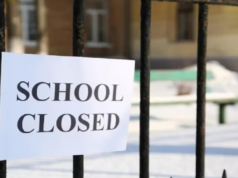During the previous summer, the Bangalore Water Supply and Sewerage Board grappled to mobilise tankers to cater to growing water demand in 110 villages on the city’s outskirts.
| Photo Credit: File photo
Groundwater levels in Bengaluru are projected to decline sharply, with some areas facing a drop of up to 25 metres, according to a study by the Bangalore Water Supply and Sewerage Board (BWSSB) and the Indian Institute of Science (IISc). The report highlights that 80 wards, including 110 villages, are heavily reliant on groundwater and are at high risk of acute shortage during the upcoming summer.
“This is the first time in India that a city-specific scientific study has been undertaken to address water scarcity. The findings have sparked off an urgent call for action to mitigate the looming crisis,” said V. Ram Prasath Manohar, Chairman, BWSSB.
Despite this, Cauvery V Stage may come to the rescue to manage the water crisis in the 110 villages. As the project is now operational, this has significantly enhanced water availability. During the previous summer, the BWSSB grappled to mobilise tankers to cater to growing water demand in these villages. While the BWSSB has established a sufficient pipeline network, many residents are yet to avail themselves of connections. The BWSSB is urging citizens to take the connection by paying the stipulated fee.
“This study is a wake-up call for Bengaluru. We urge residents, especially those in high-risk areas, to transition from groundwater dependence to the Cauvery water connection. The Cauvery V Stage has significantly enhanced water availability and offers a viable solution to the city’s growing needs,” Mr. Manohar said.
City using 800 MLD of groundwater
The study for the first time quantifies the reliance on groundwater and pegs it at 800 MLD in the city. It flags concerning trends in Bengaluru’s groundwater levels and the city’s dependency on this resource. In Central Bengaluru, groundwater levels are projected to decline by up to 5 metres, while areas under the erstwhile CMCs (City Municipal Councils) could see a drop of 10 to 15 metres. The situation is even more alarming in peripheral villages, where groundwater levels may fall by 20 to 25 metres by mid-March, 2025.
The study Identified 80 critical wards which will see an acute water crisis. A few identified wards are jakkur, Nagavara, Horamavu, Laggagere, Gandhinagar, Binnipet, Shivajinagar, Konkuntuute, Equra, srinagar, and Bommanahili. These 80 Wards are mostly in south-east bengaruru, whitefield, and other other.
Published – January 25, 2025 09:36 pm is






